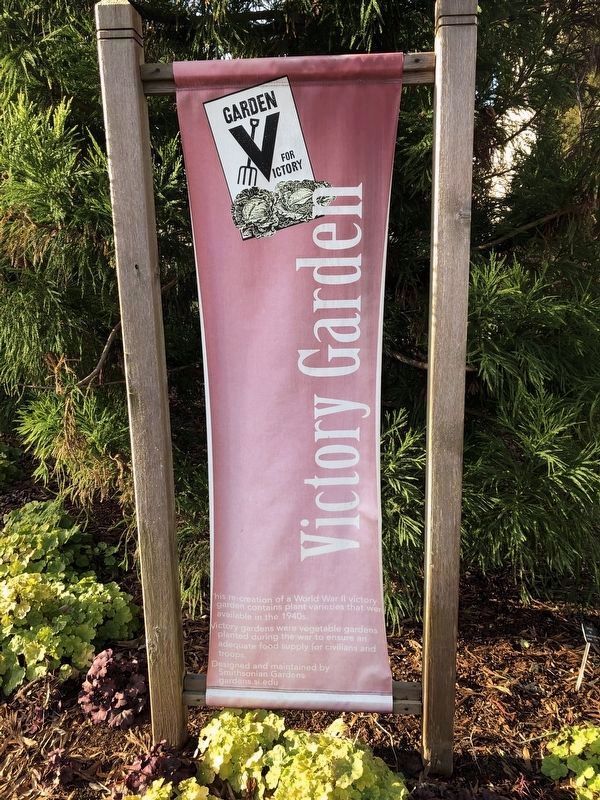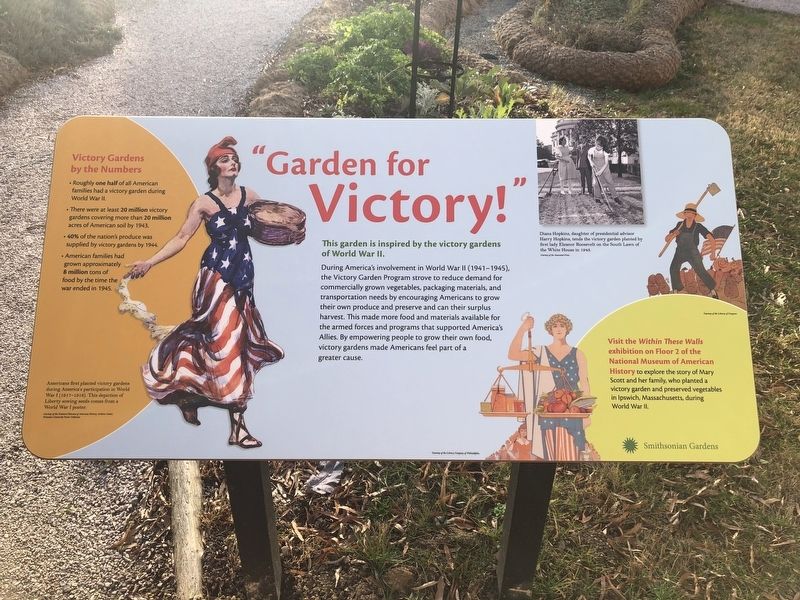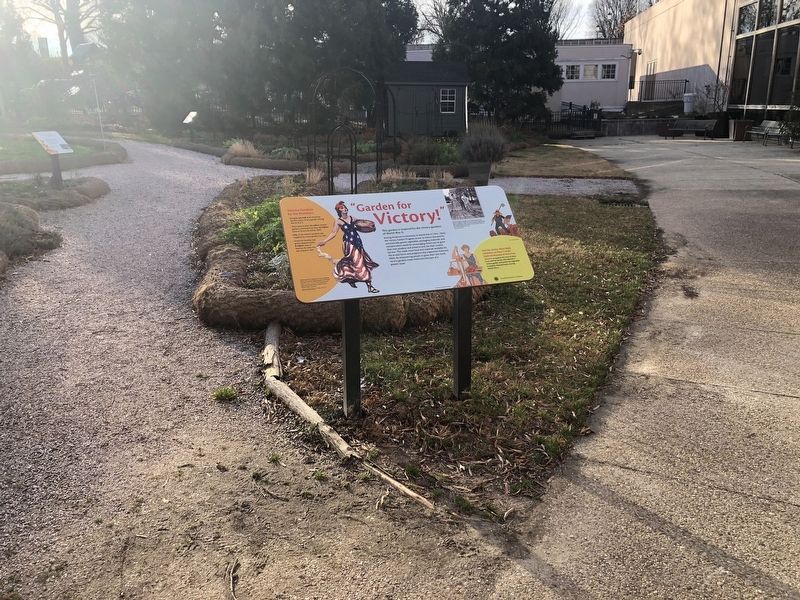The National Mall in Northwest Washington in Washington, District of Columbia — The American Northeast (Mid-Atlantic)
"Garden for Victory!"
This garden is inspired by the victory gardens of World War II.
During America's involvement in World War II (1941-1945), the Victory Garden Program strove to reduce demand for commercially grown vegetables, packaging materials, and transportation needs by encouraging Americans to grow their own produce and preserve and can their surplus harvest. This made more food and materials available for the armed forces and programs that supported America's Allies. By empowering people to grow their own food, victory gardens made Americans feel part of a greater cause.
Victory Gardens by the Numbers
• Roughly one half of all American families had a victory garden during World War II.
• There were at least 20 million victory gardens covering more than 20 million acres of American soil by 1943.
• 40% of the nation's produce was supplied by victory gardens by 1944.
• American families had grown approximately 8 million tons of food by the time the war ended in 1945.
[Sidebar:]
Visit the Within These Walls exhibition on Floor 2 of the National Museum of American History to explore the story of Mary Scott and her family, who painted a victory garden and preserved vegetables in Ipswich, Massachusetts, during World War II.
Erected 2019 by Smithsonian Gardens, Smithsonian Institution.
Topics. This historical marker is listed in these topic lists: Horticulture & Forestry • Patriots & Patriotism • War, World II. A significant historical year for this entry is 1943.
Location. 38° 53.485′ N, 77° 1.74′ W. Marker is in Northwest Washington in Washington, District of Columbia. It is in The National Mall. Marker is at the intersection of Constitution Avenue Northwest (U.S. 1/50) and 12th Street Northwest, on the right when traveling east on Constitution Avenue Northwest. Touch for map. Marker is at or near this postal address: 1200 Constitution Ave NW, Washington DC 20560, United States of America. Touch for directions.
Other nearby markers. At least 8 other markers are within walking distance of this marker. Welcome to Our Meadow! (here, next to this marker); Green Glaze Collards (a few steps from this marker); Chioggia Beets (a few steps from this marker); "Better Food, Better Health and Better Cities" (a few steps from this marker); Deer's Tongue Lettuce (a few steps from this marker); Beauregard Sweet Potato (a few steps from this marker); Chiogga Beets (a few steps from this marker); "Of Course I Can!" (a few steps from this marker). Touch for a list and map of all markers in Northwest Washington.
More about this marker.
[Captions:]
Americans first
Diana Hopkins, daughter of presidential advisor Harry Hopkins, tends the victory garden planted by first lady Eleanor Roosevelt on the South Lawn of the White House in 1945.
Related marker. Click here for another marker that is related to this marker. An identical marker stands a few feet away.

Photographed By Devry Becker Jones (CC0), January 9, 2021
3. Banner on the grounds of the Victory Garden
Victory Garden
This re-creation of a World War II victory garden contains plant varieties that were available in the 1940s.
This re-creation of a World War II victory garden contains plant varieties that were available in the 1940s.
Victory gardens were vegetable gardens planted during the war to ensure an adequate food supply for civilians and troops.
Designed and maintained by Smithsonian Gardens gardens.si.edu
Credits. This page was last revised on January 30, 2023. It was originally submitted on January 9, 2021, by Devry Becker Jones of Washington, District of Columbia. This page has been viewed 119 times since then and 10 times this year. Photos: 1, 2, 3. submitted on January 9, 2021, by Devry Becker Jones of Washington, District of Columbia.

